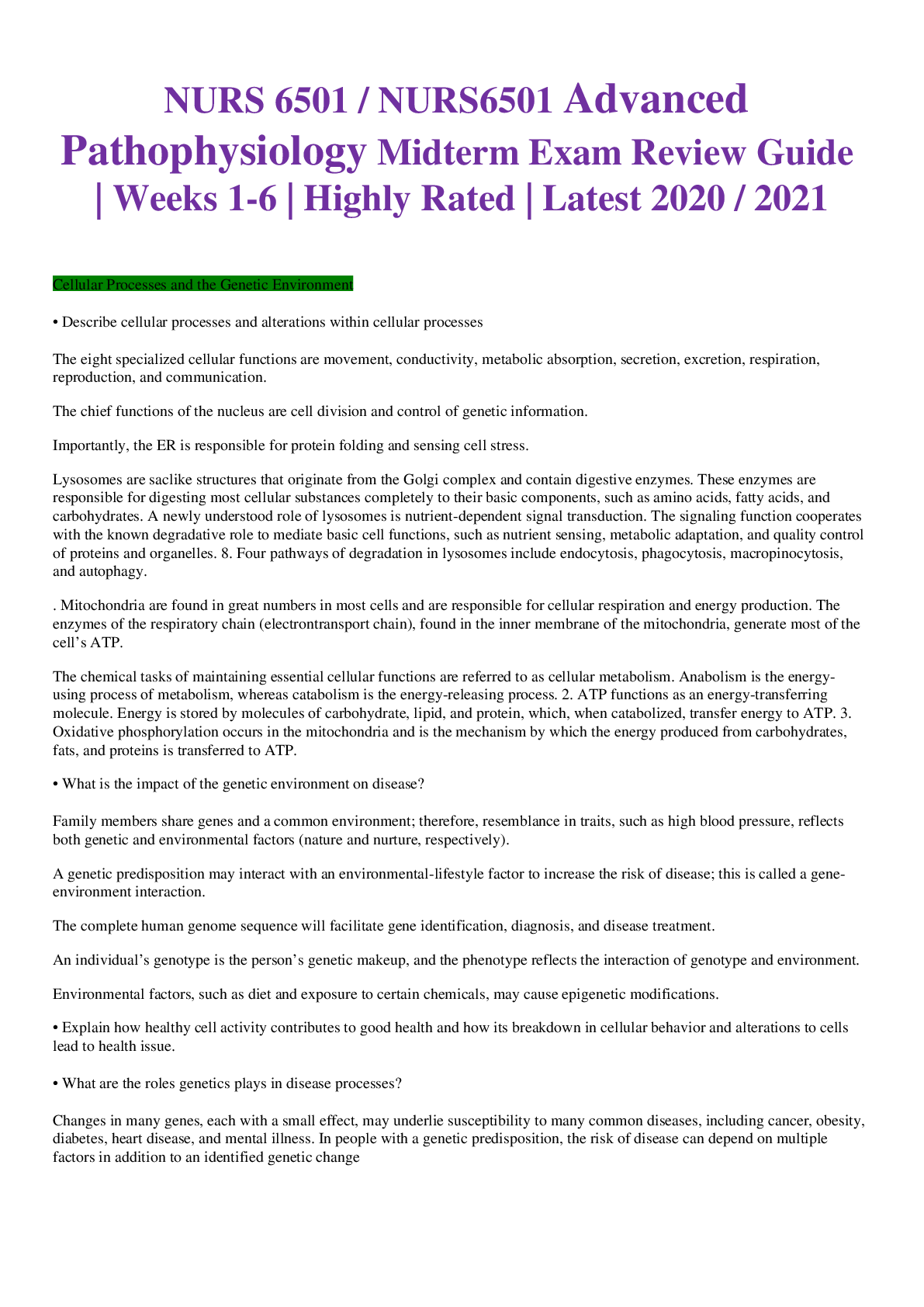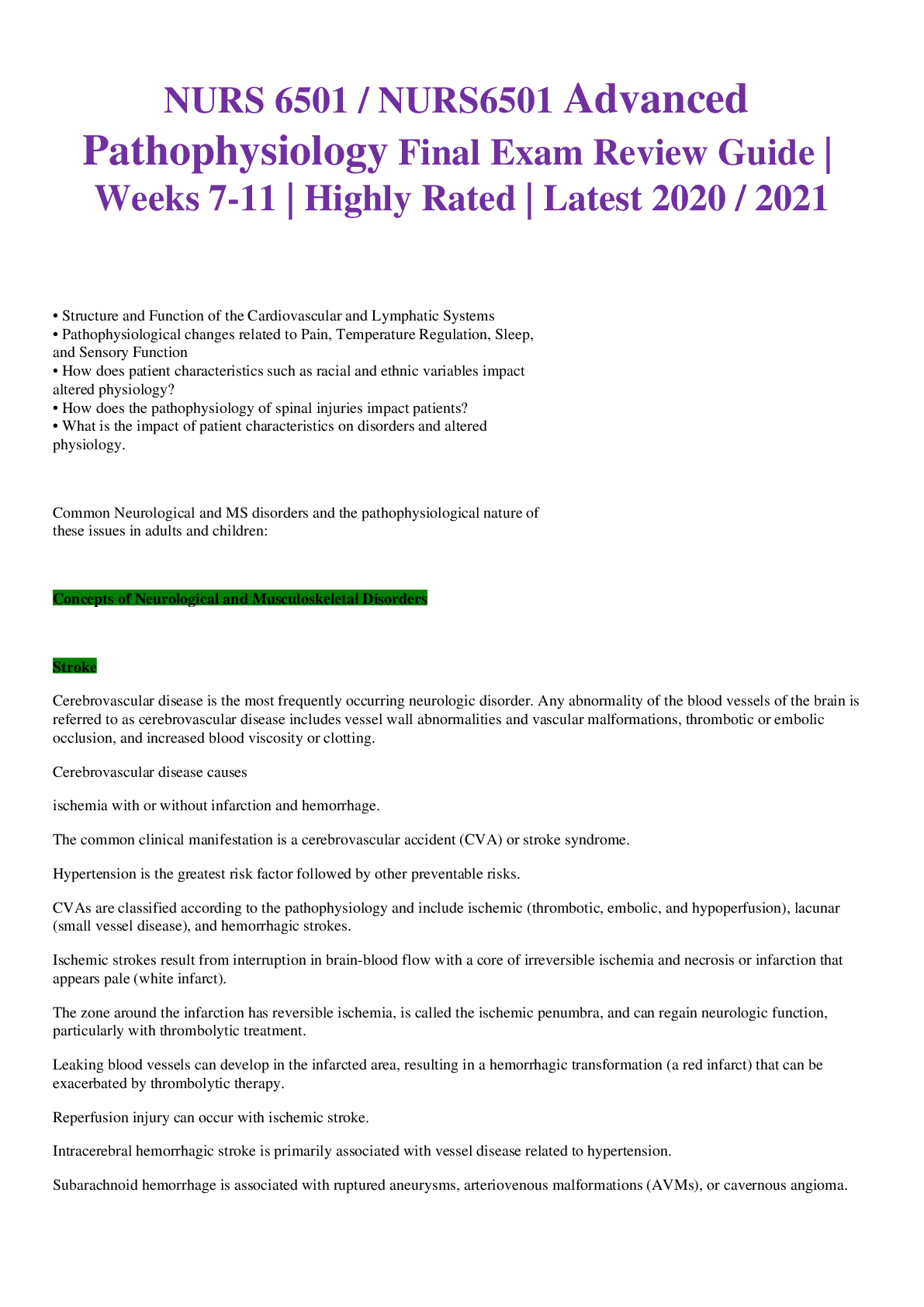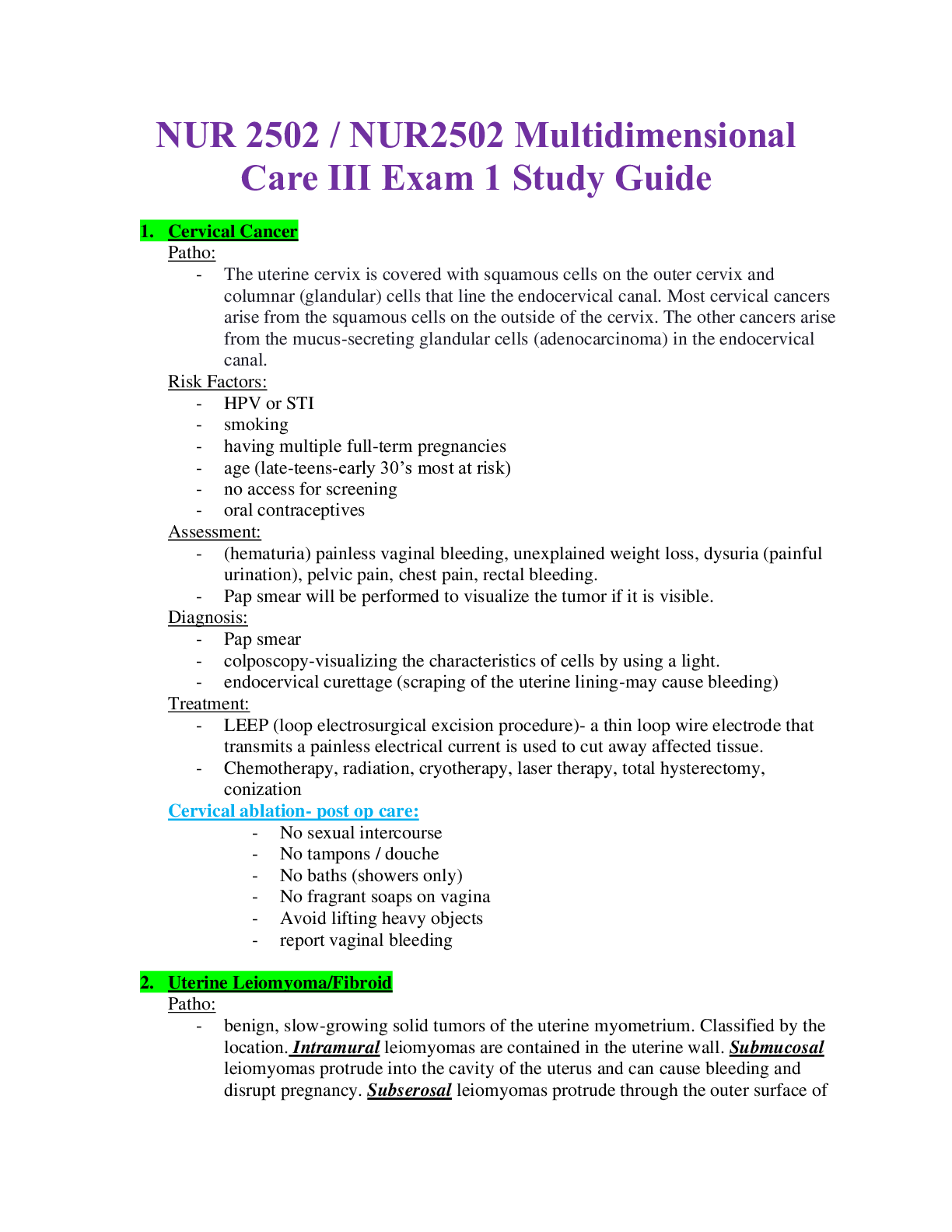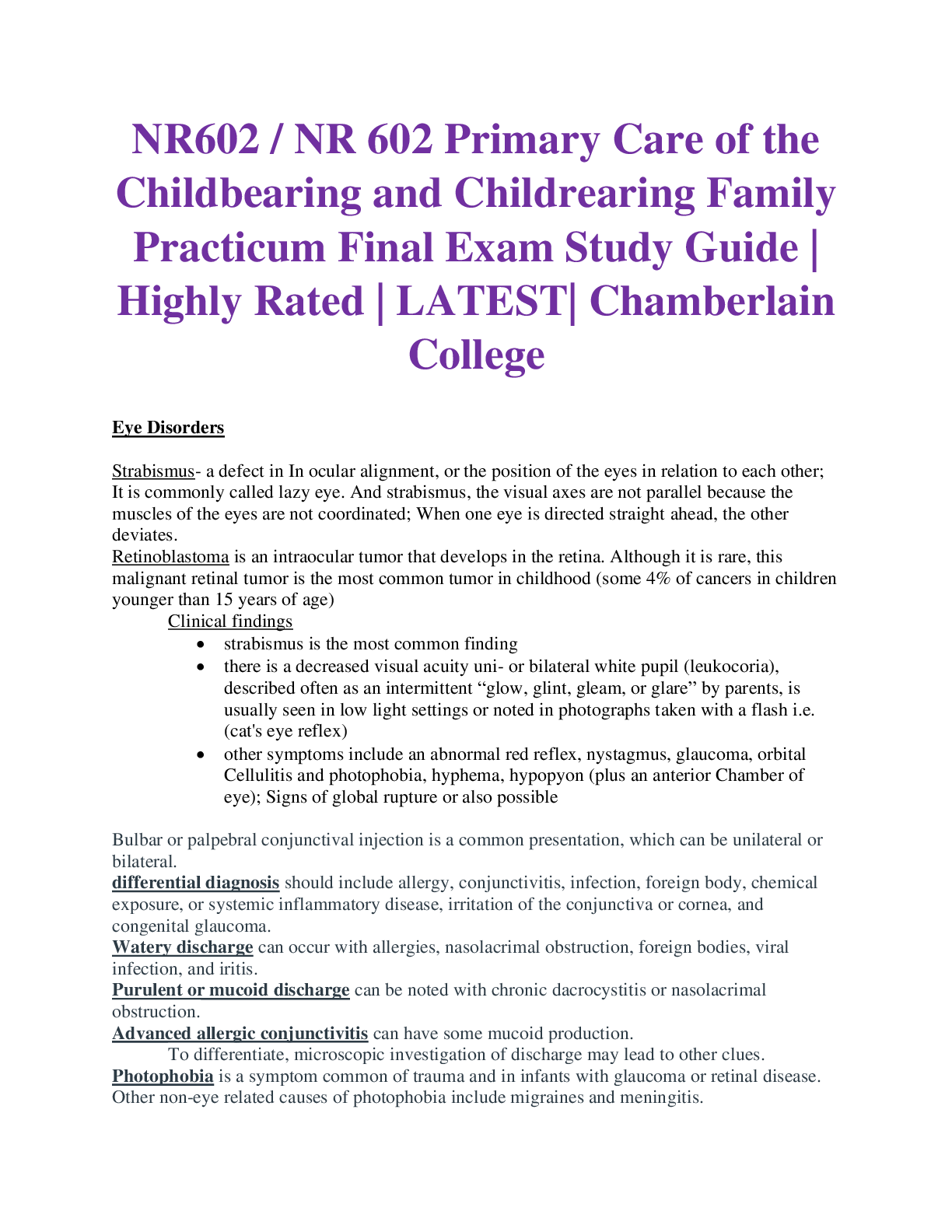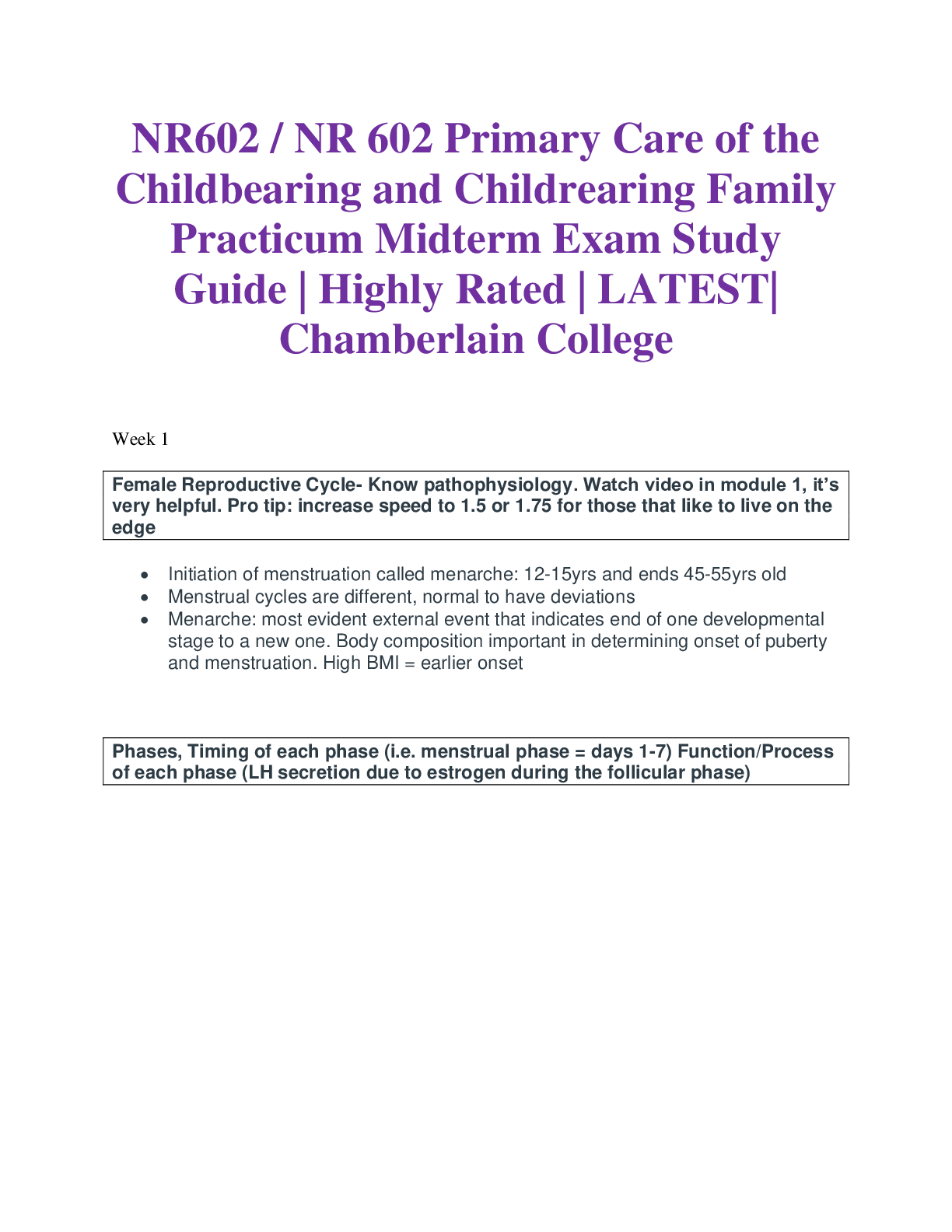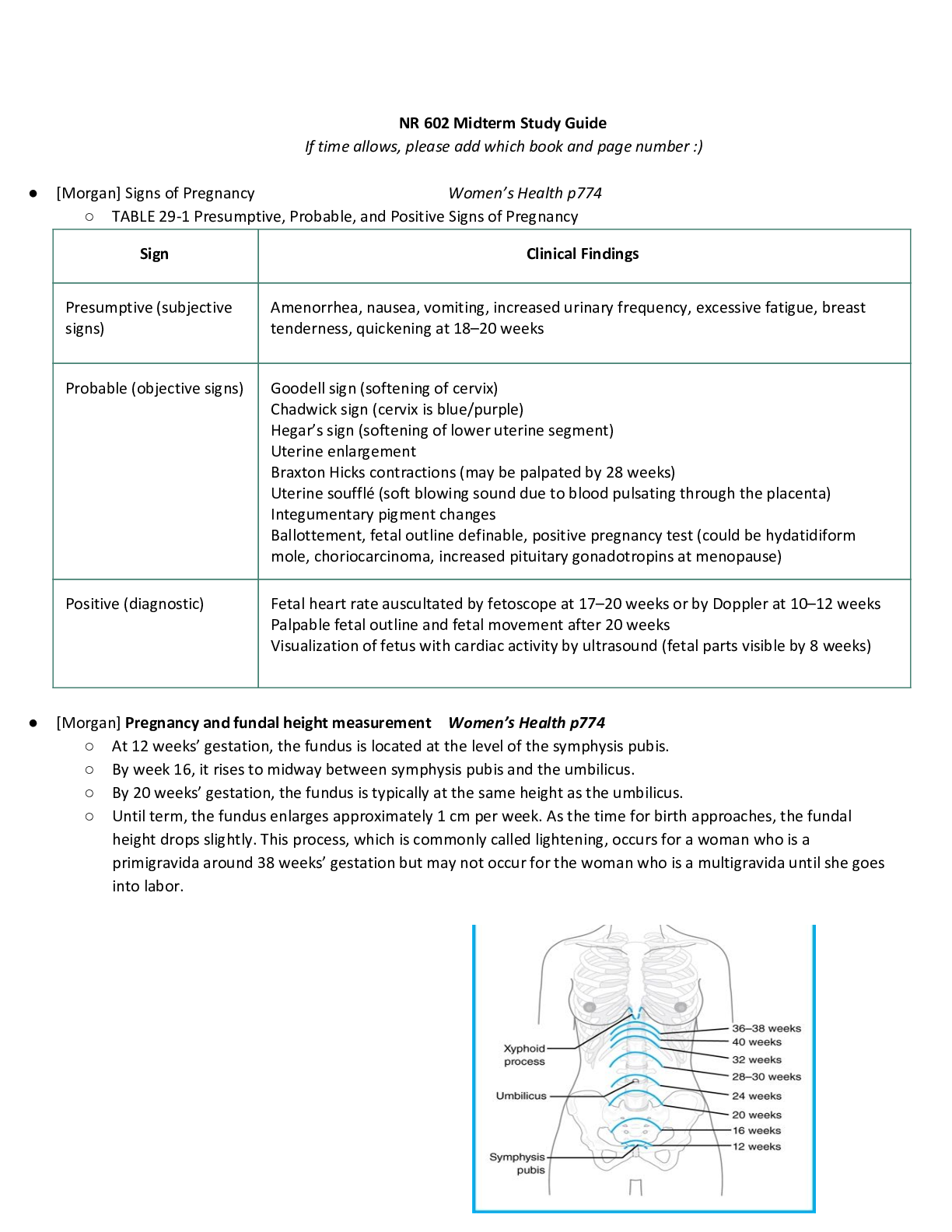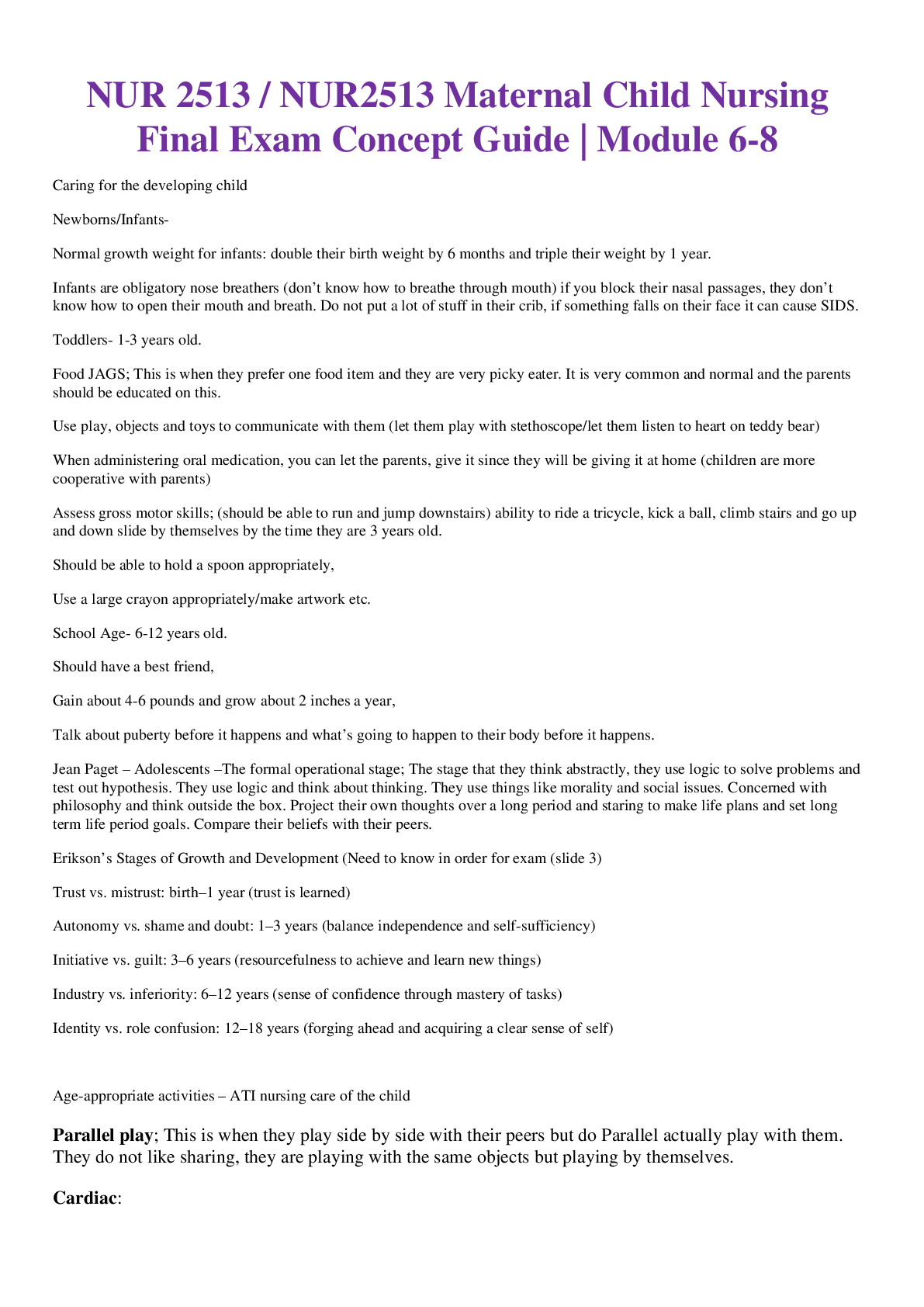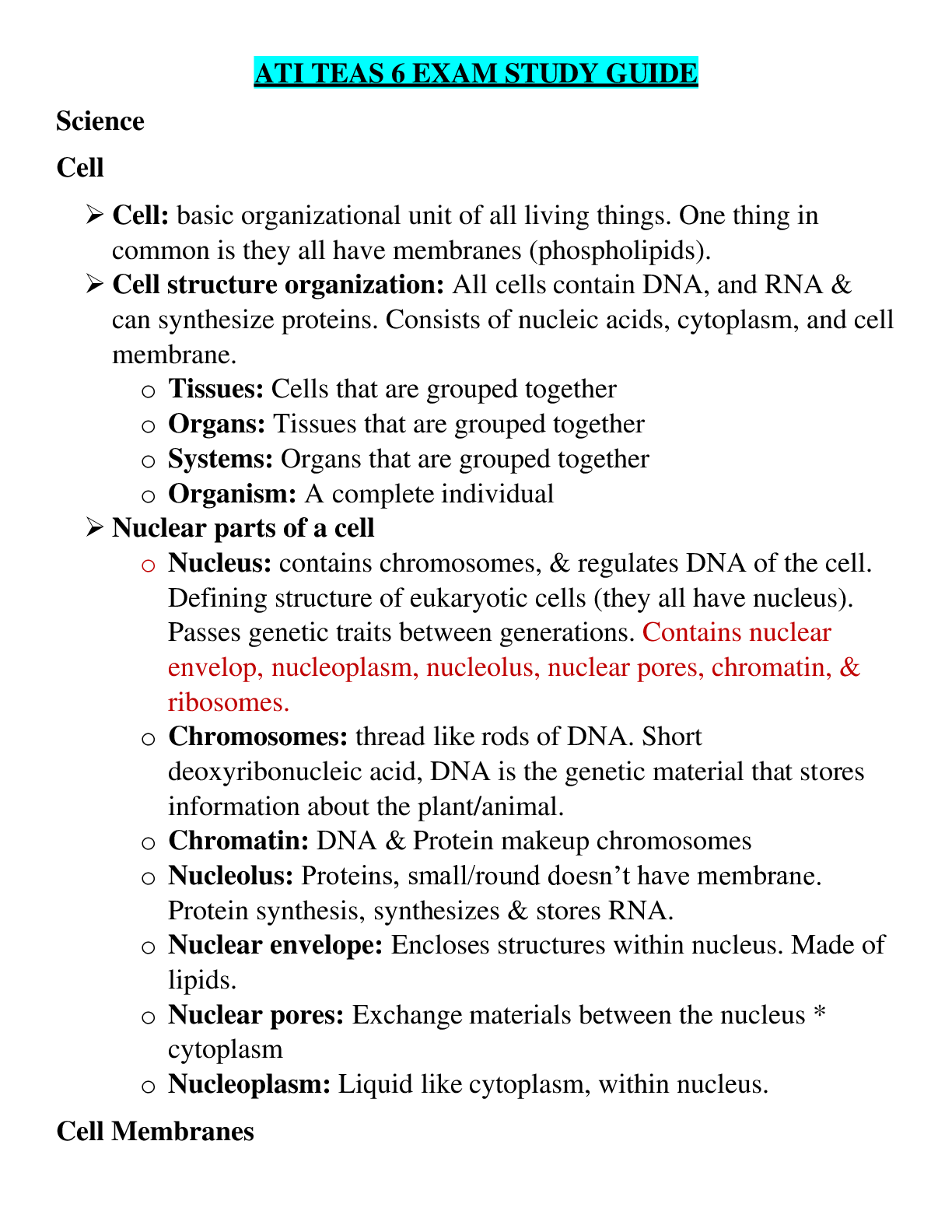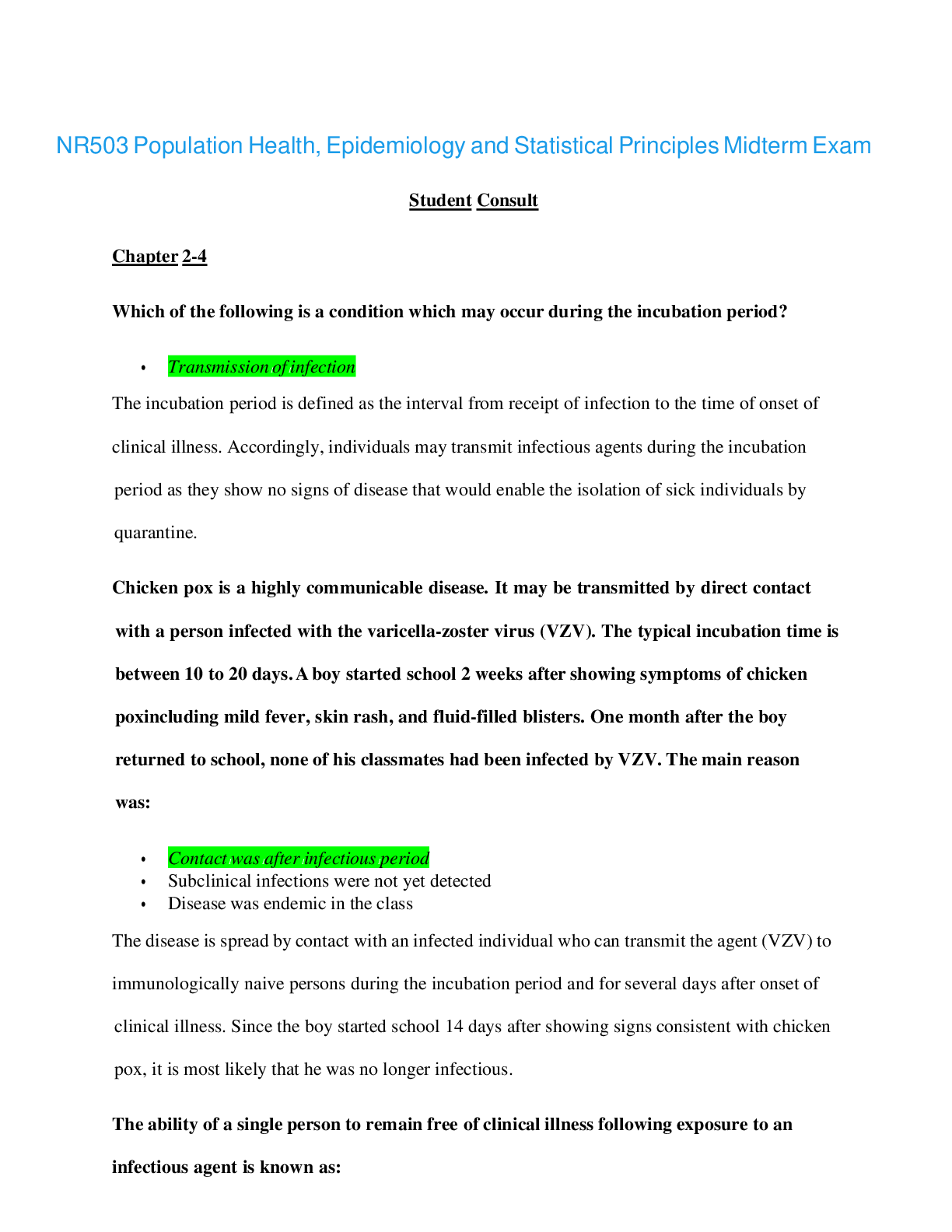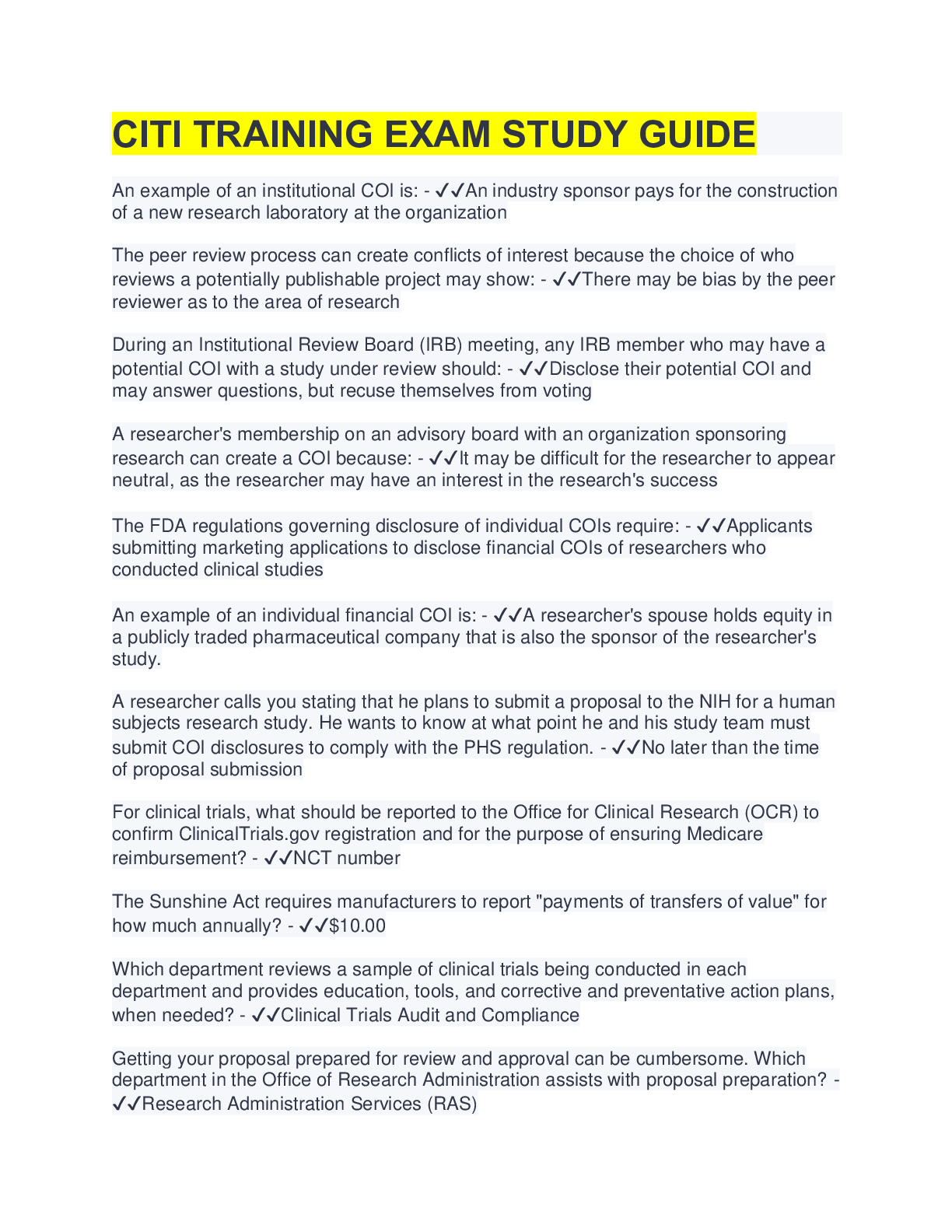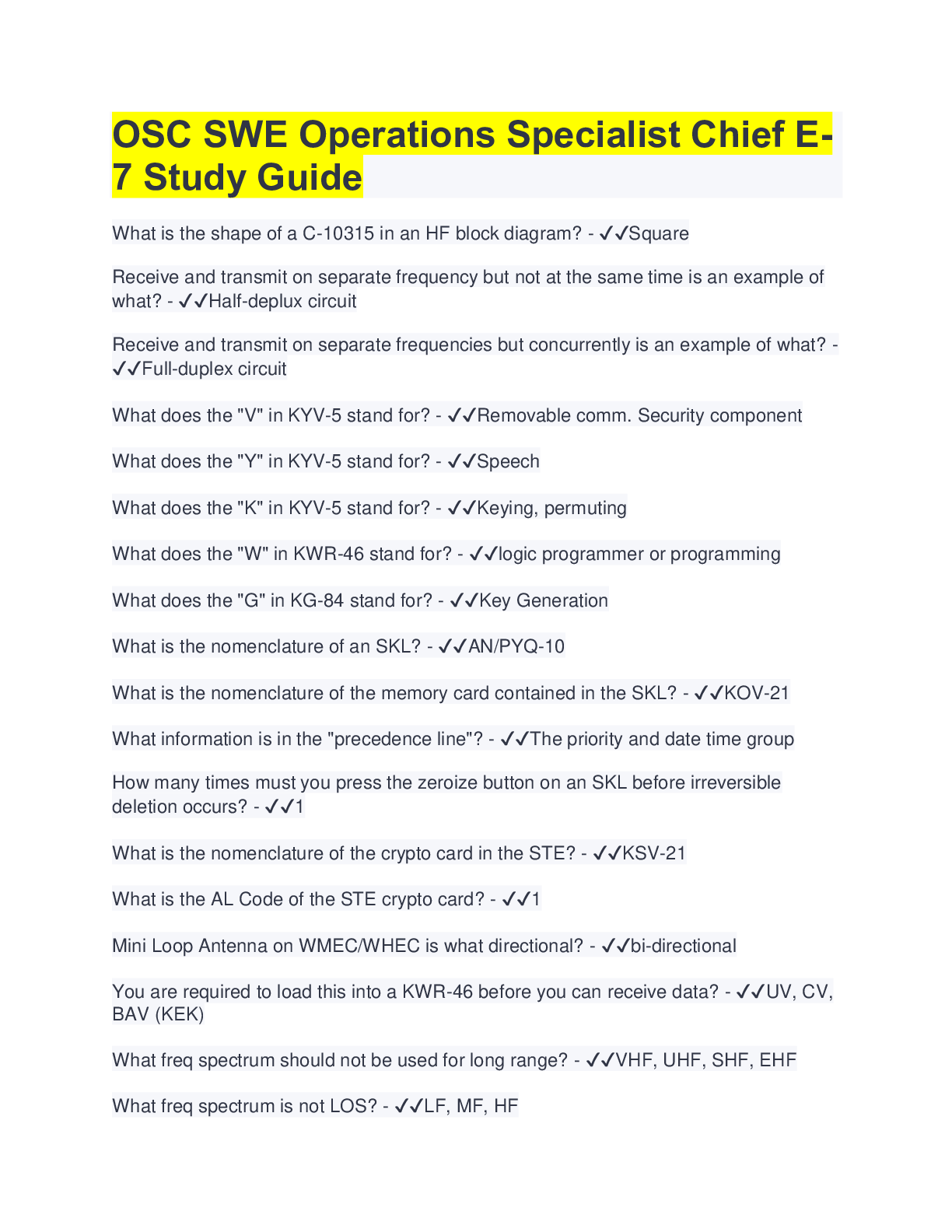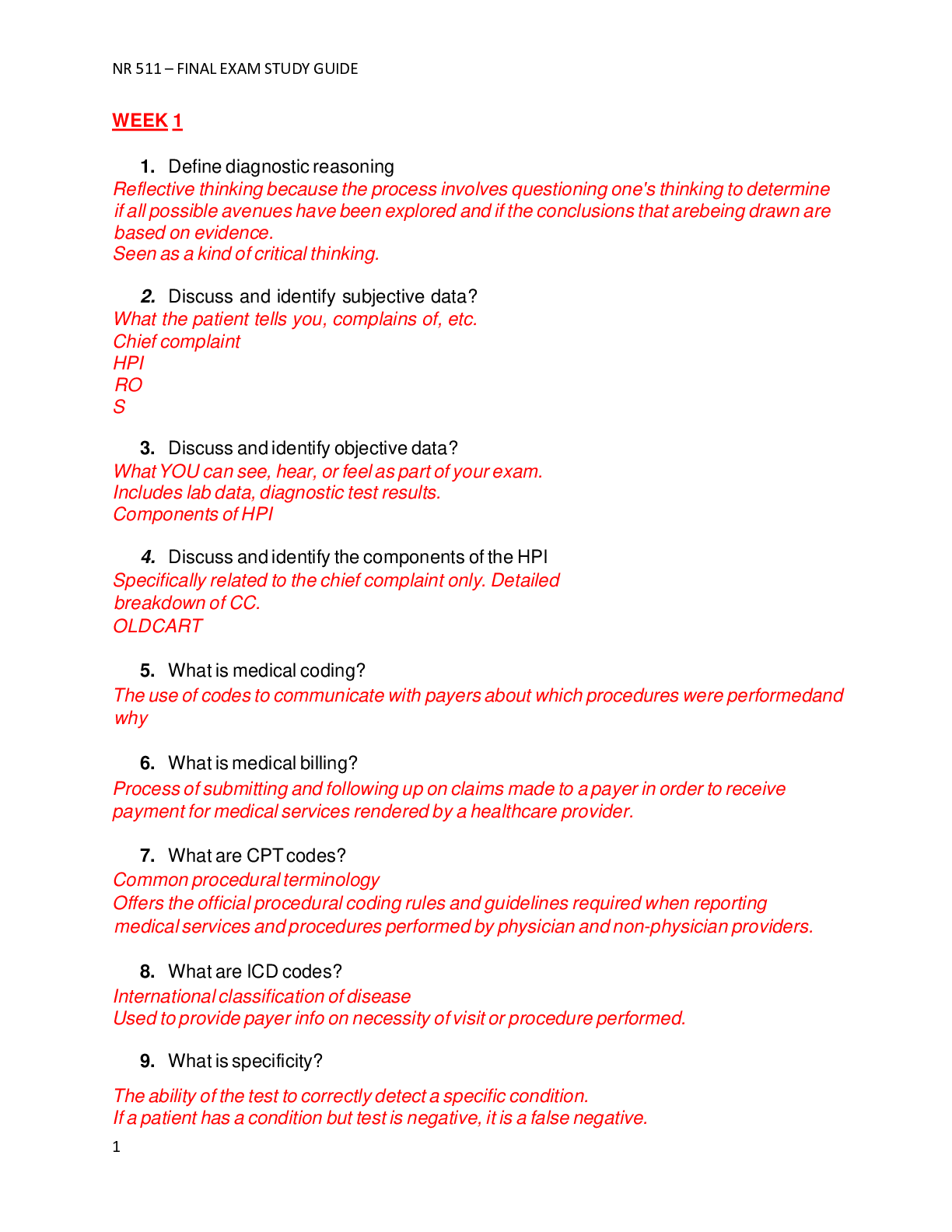*NURSING > STUDY GUIDE > NR 507 / NR507 Advanced Pathophysiology Week 2 Study Guide | Rated A | LATEST | Chamberline College (All)
NR 507 / NR507 Advanced Pathophysiology Week 2 Study Guide | Rated A | LATEST | Chamberline College
Document Content and Description Below
Respiratory disorders and alterations in acid-base fluid balance and electrolytes: Water balance: Solvent= water Solute= any substance in water Solution/fluid= water and the substance in it ... Movement of water refers to only water without solute Basics of Fluid, electrolyte, acid and base balance: All living organisms are composed of water and the solutes dissolved in it - Solutes include: electrolytes (Na+, Cl-, K+, Ca+2) and non- electrolytes (proteins and glucose) Why are all living organism water based? The functions of water include: - Body temp regulation - Lubrication (synovium, pleura, pericardium) - Transportation of nutrients and wastes in and out of cells - Cellular metabolism medium Total body water (TBW) sum of fluids in all compartments - Approx. 60% of body wt in adults What are the “compartments”? - Intracellular fluid (ICF)- fluid within cells primarily potassium and phosphate o 40% of body wt - Extra cellular fluid (ECF)- fluid outside of cells primarily sodium and chloride o 20% of body wt ECF can be in 3 separate locations: 1) Intravascular fluid (IV) – blood plasma 5% 2) Interstitial fluid (IF)- fluid between cells and outside of blood vessels 15% 3) Other fluids (3rd space) a. lymph, synovial fluid, CSF, intestinal, urine, sweat, intraocular, and body cavity fluids Both ECF and ICF contain solutes Solute levels differ between the ECF and ICF but each compartment has the same electroneutrality within given body compartment Body fluids are in constant movement with 2 way traffic patterns - Between the ICF and ECF - Between the plasma (IV) and IF What creates fluid movement? Fluids movement between ECF and ICF is driven by the process of osmosis Osmosis- movement of water and small particles across a membrane as determined by solute concentration = osmotic pressure Osmolarity VS osmolality: Osmolarity- # of moles of osmotically active solute per liter of solution Osmolality- # of moles of osmotically active solute per Kg of solution A solute that can’t pass thru a semipermeable membrane is considered osmotically active Osmolality- is a more precise expression for the measurement of biological fluids - Preferred measure of osmotic activity Osmolarity- can be inaccurate in cases of hyperlipidemia, hyperproteinurea, urine samples, or in samples containing high levels of other osmotically active substances Tonicity= osmolality= concentration of - Refer to the concentration of fluids of solutes to solvent (water) ECF gets more concentrated by giving a very concentrated/hypertonic/hyperosmolar IV fluid - The ECF space will become more concentrated/hypertonic/hyperosmolar than the cells and the water will move (thru osmosis) out of the cells to equalize the concentration of both compartments End result= the cells shrink and cells are very sensitive to water shifts that affect their func - The opposite occurs by making the ECF compartment less concentrated/hypotonic/hyposmolar than normal by giving a dilute IV solution End result= The cells swell as the water moves into them 0.9% NS and LR = isotonic solutions All other solutions are hypo or hypertonic A desirable situation for cells: - Normal fluid movement favors isotonic conditions o ICF and ECF osmolality is equal o Isovolemia- balanced movement of water and solutes between ICF and ECF Changes in the solute can result in unequal ICF and ECF fluid shifts - Hypotonic conditions- ECF has lower osmolality than ICF which draws water into the cell o This causes cellular swelling and plasma volume decrease= hypovolemia o Pulling fluid plasma into the cell o Water moves into more concentrated areas o This is caused by low electrolyte levels or higher than normal water levels - Hypertonic conditions- ECF has higher osmolality than ICF which draws water out of the cell o This causes cellular shrinkage and plasma volume increase=hypervolemia o This is caused by high electrolyte levels or lower than normal water levels o Ex dehydration Why is osmolality important? Changes in osmolality can result in: - Changes in electrolyte concentration - Changes in electrical activity of excitable cells o Ex nerve cells and muscle cells - Characterized by changes in muscle tone, cardiac func, and levels of consciousness And/ or changes can result in: - Unequal ICF and ECF fluid shifts that can cause edema Body fluids are in constant movdment with 2 traffic patterns: 1) ICF and ICF 2) Between plasma (IV) and interstitial fluid (IF) [Show More]
Last updated: 1 month ago
Preview 1 out of 21 pages
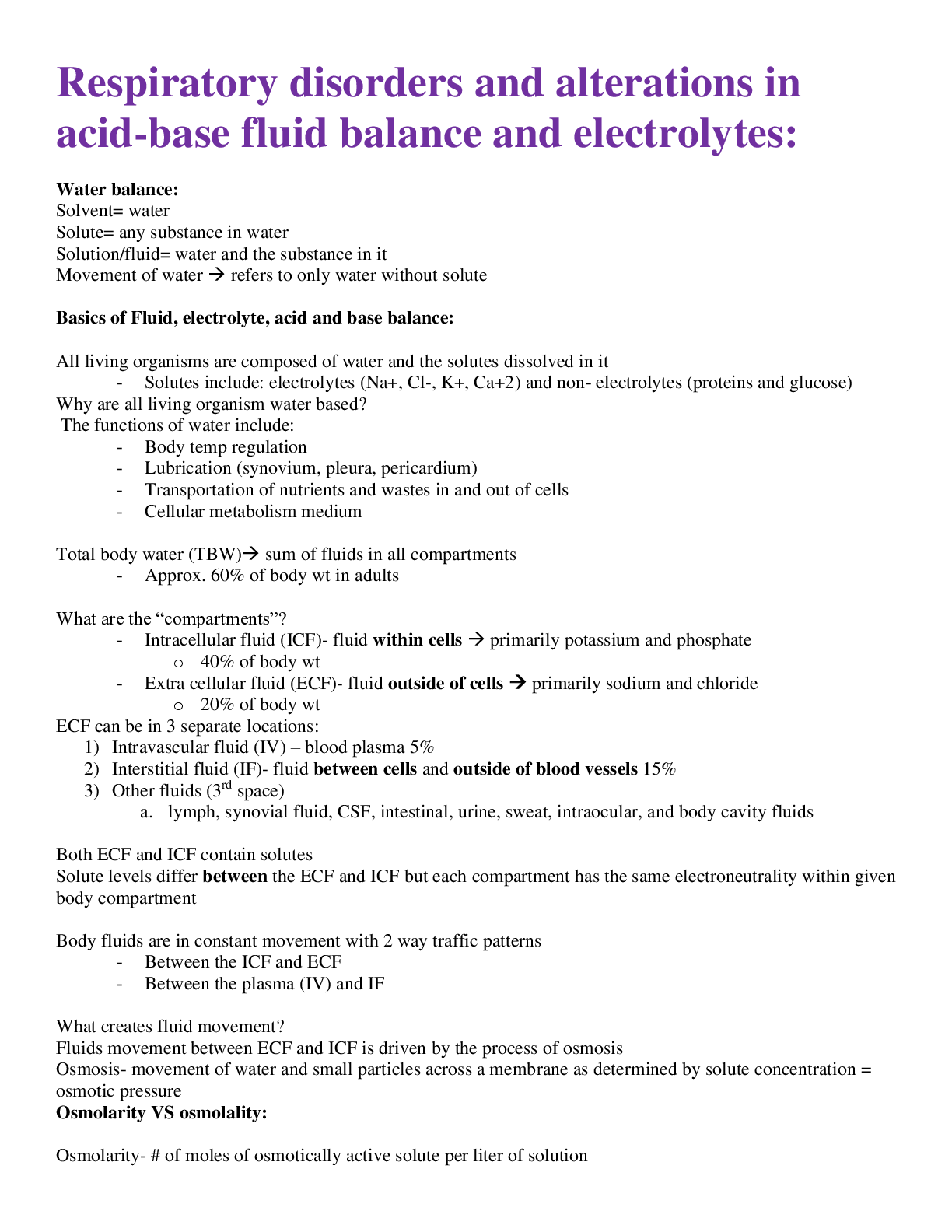
Reviews( 0 )
Document information
Connected school, study & course
About the document
Uploaded On
Feb 07, 2021
Number of pages
21
Written in
Additional information
This document has been written for:
Uploaded
Feb 07, 2021
Downloads
0
Views
51


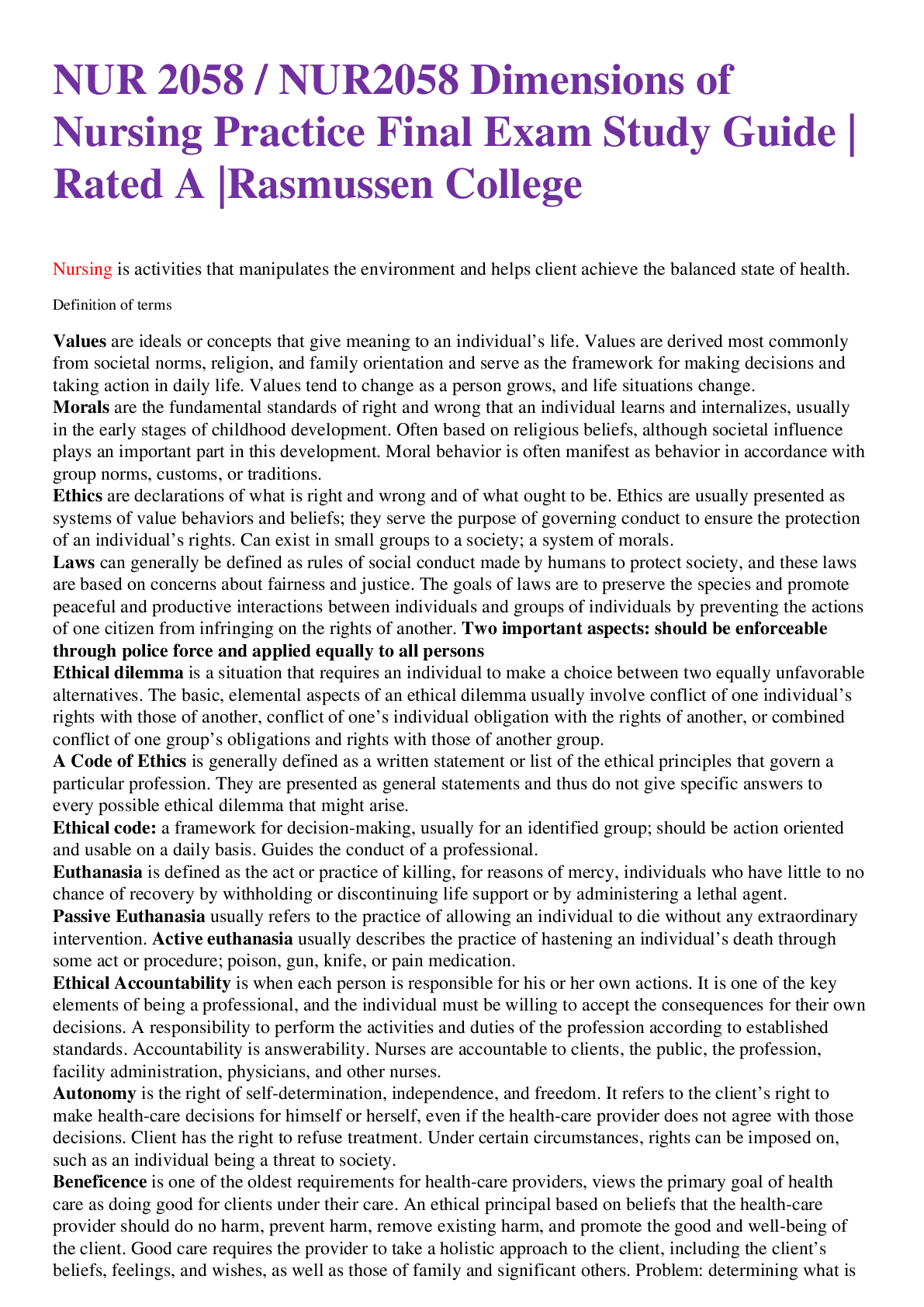


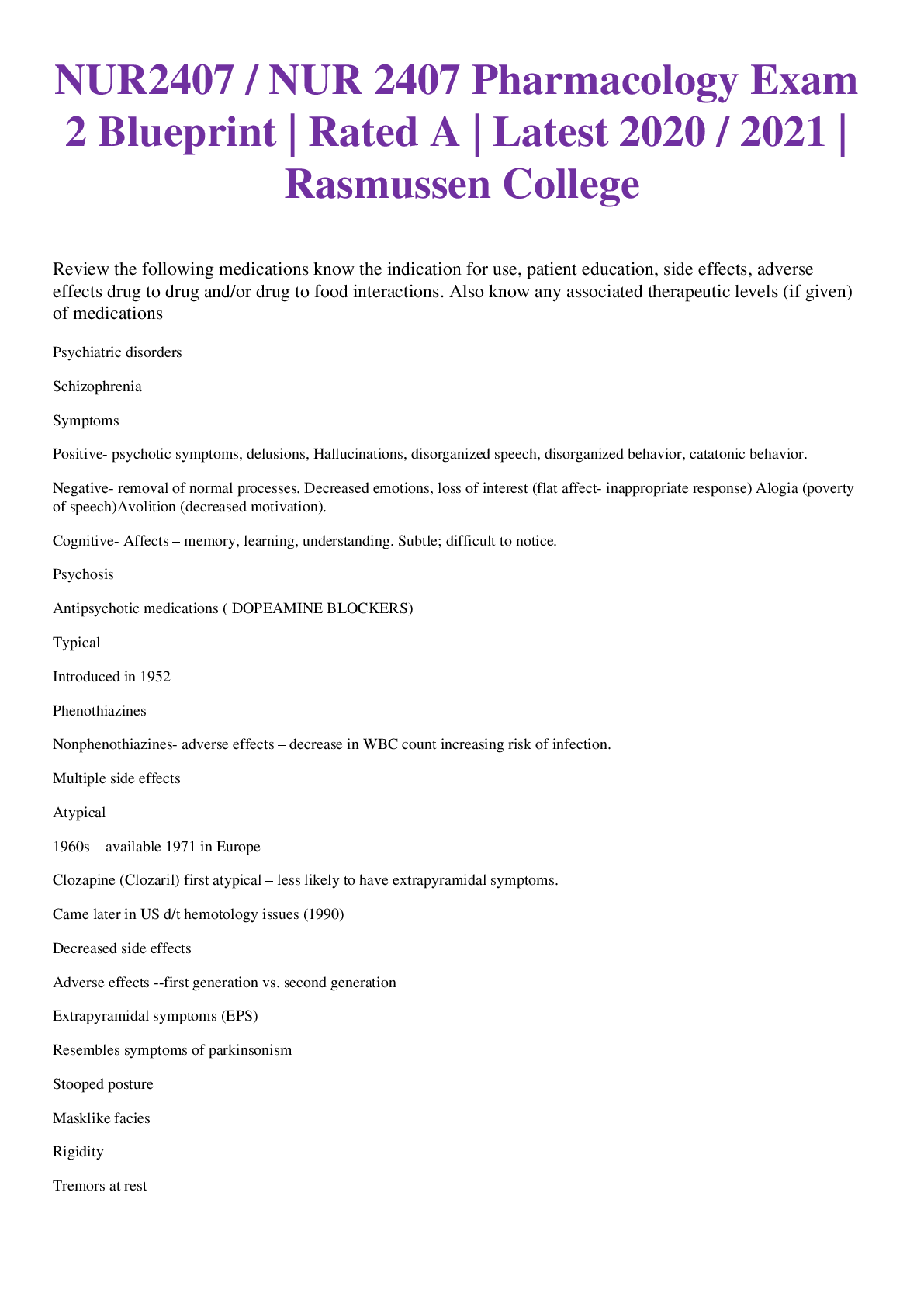
.png)


